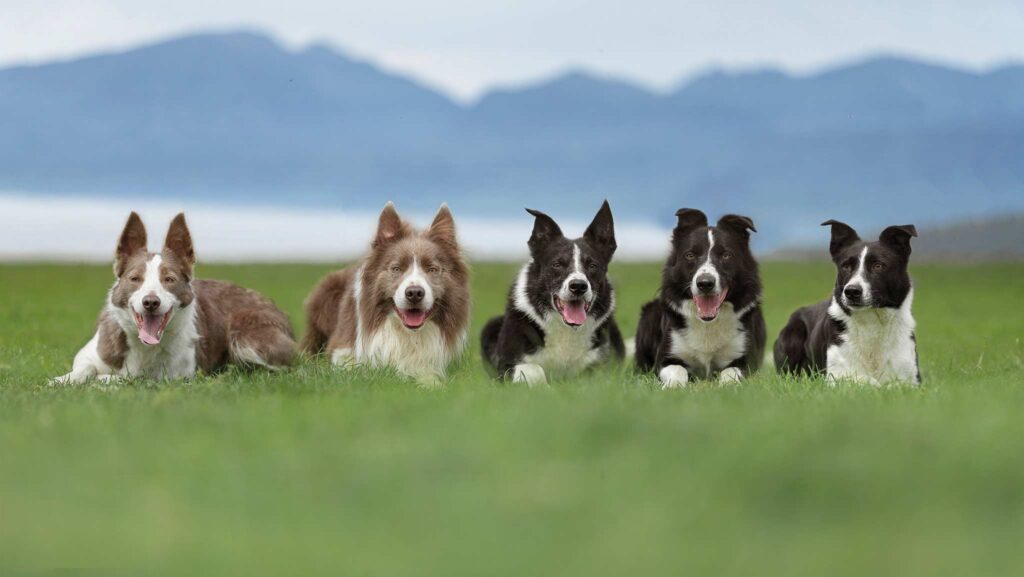Sheepdog School: Teaching a collie whistle commands
 © Chloe Brown Photography
© Chloe Brown Photography Sheepdogs are often one of the farm’s greatest assets, and the value of a well-trained collie cannot be overestimated. But even the most experienced of dogs can have their quirks.
Husband and wife team Emma Gray and Ewan Irvine are known for breeding, training and competing some of the country’s finest sheepdogs.
In this month’s edition of Sheepdog School, they share their best tips for introducing working dogs to whistle commands.
See also: Sheepdog School: What’s the best sheep breed for trainee dogs?
Getting started
“We begin training our young sheepdogs on voice commands and, for some farms, voice is all you will ever need,” explains Emma. “However, adding whistle commands can provide advantages over voice.”
These include the following:
- The ability to communicate at distance – a command can be blown at the same tone, whether a dog is far away or by your side
- Whistle commands penetrate much further than voice and carry better in bad weather
- They give more precise control over a dog
- Sensitive dogs benefit as you can convey volume without sounding harsh or angry.
“You can whistle with your mouth, your fingers, or use a plastic or metal artificial whistle,” Emma says. “Personally, we like to use a metal whistle – this way, it leaves our hands free.”
If you are just learning to use a whistle, wait until you can blow it consistently before you begin training your dog, otherwise you can cause confusion and hesitation.
“We tend to wait until our dogs are reasonably competent, are stopping well and know their left and right [sides] before we add whistle commands.”
When deciding what commands to use, it is worth thinking about what will suit your dog.
If you have a dog that is very sharp in its actions and movement, softer, slower whistles might complement them better than sharp, fast ones.
Meanwhile, sharp whistle commands might suit a dog that is steady, as they will encourage faster movement.
“We can add subtlety to the commands down the line to communicate shorter flanks versus full, long flanks, different degrees of steady, or a stand versus a lie down, and so on,” Ewan adds.
Putting a dog onto whistles
Teaching a dog to respond to whistle commands is often an enjoyable part of training. Most will pick it up quickly, sometimes in only a handful of sessions.
“The way we add whistle commands is very similar to the way we taught the voice commands – we simply put the whistle to the action,” says Ewan.
“We give our dog the voice command and, as it already understands, the dog will respond. We then immediately add the whistle to the action.”
Emma and Ewan add two different whistle actions in the first session – stop, and walk on.
“For our stop, we use a longer, drawn-out whistle akin to a horse rider’s ‘whoa’. Our ‘walk on’ whistle is a couple of pips.
“You will likely find this one is taken readily, as most dogs like to get working and use any excuse to get going,” explains Emma.
The couple try to implement the stop and walk-on actions together as it teaches dogs to distinguish between the different tones in the whistle.
For example, if you only use a whistle command for the stop, and later decide to add further whistles, your dog might think that any whistle it hears means stop.
For this phase of training, whistle command basics are taught at hand, ensuring dogs are happy and confident before moving on to bigger distances.
If the dog stops listening at distance, they advise trainers return to working at hand.
“We teach one directional flank whistle at a time, sticking to voice for the other flank for a couple of sessions to avoid confusion. Using this method means most dogs pick up their whistles quickly,” says Ewan.
It also helps to have distinctly different whistles for different commands, so that if it is very windy and the dog only catches half the whistle, it still understands.
“We use a sharper, two-tone whistle for one flank/side and a lower, three-tone whistle for the other flank/side.
“One of our most helpful commands is a recall whistle. Our recall sounds like a police siren, ‘nee-naw, nee-naw’,” he says.

